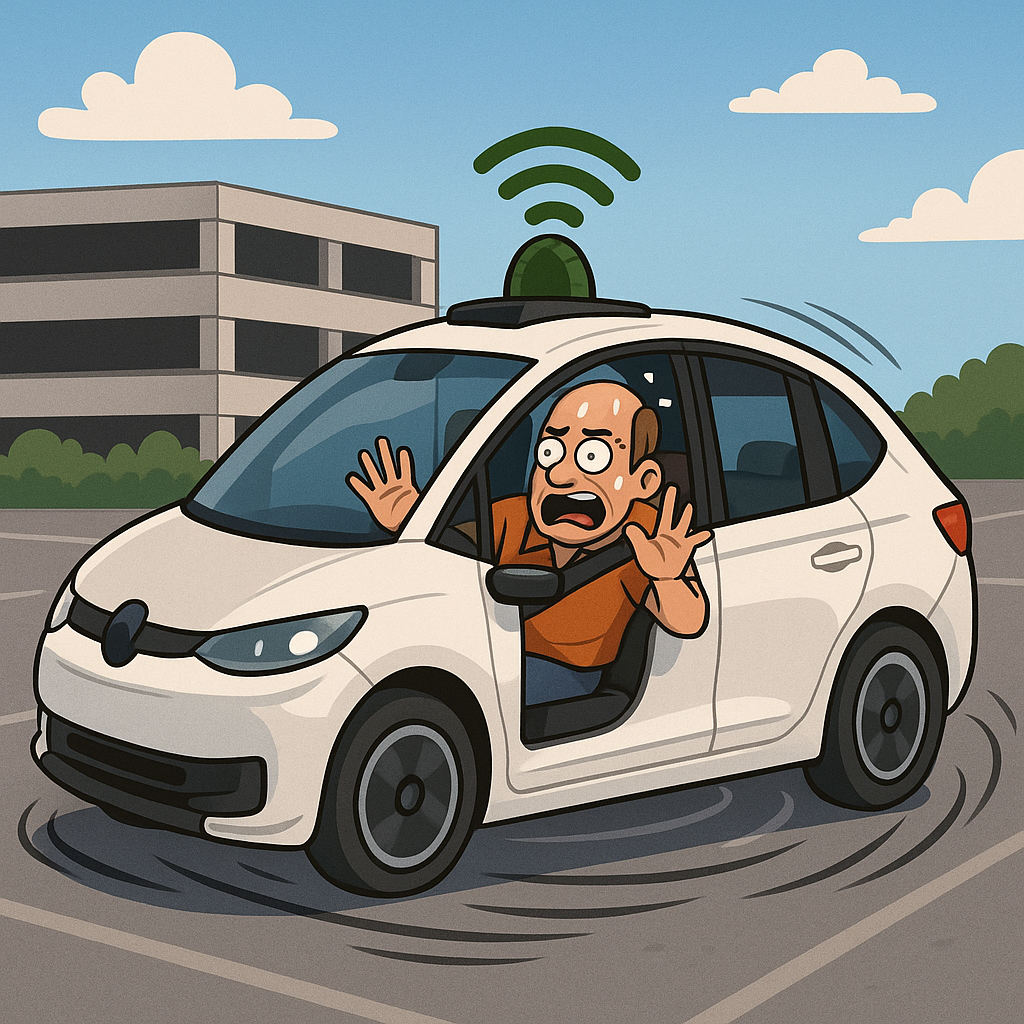Making cars safer for pedestrians is a crucial issue, as vulnerable road users such as pedestrians, cyclists, and scooter riders are at risk of accidents. Jessica Hart, a member of the campaign group DC Families for Safe Streets, advocates for better-designed streets, more attentive drivers, and safer vehicles. She highlights that the safety of people outside of cars is often overlooked when people buy vehicles, as their focus is primarily on price and perceived safety for the driver and passengers.
Technology plays a significant role in improving pedestrian safety. Safety features such as pedestrian airbags, pop-up bonnets, and automatic emergency braking (AEB) systems are being integrated into new vehicles to reduce the impact of collisions. However, the cost of these features remains a concern for drivers, and manufacturers are working to make them more affordable.
One challenge in vehicle safety design is the integration of features that specifically protect vulnerable road users. For instance, windscreen pillars and the top of the windscreen pose significant danger points for cyclists and pedestrians. Volvo has introduced pedestrian airbags and pop-up bonnets to address these risks, but the adoption of these innovations across other models has been slow.
In addition to passive safety features, active safety technologies like AEB are crucial in preventing accidents. AEB systems are becoming more sophisticated, using sensors such as lidar and radar to detect not only pedestrians but also other vulnerable road users like cyclists. Furthermore, speed and the size of vehicles also play a critical role in the severity of impacts, with larger vehicles like SUVs posing a greater risk to pedestrians.
Regulations and safety assessments for vehicles are evolving to prioritize pedestrian protection. For example, the European New Car Assessment Programme (Euro NCAP) has incorporated dooring into its safety assessments, and the National Highway Traffic Safety Administration (NHTSA) in the US is considering safety rules for pedestrian protection. Ultimately, the goal is to prevent tragic accidents caused by traffic violence and improve vehicle design through regulations.
Original news source: How to make cars less dangerous for pedestrians (BBC)
Listen
Slow
Normal
Fast
Group or Classroom Activities
Warm-up Activities:
– News Reporter Role-play
Instructions: Split the class into pairs. One student plays the role of a news reporter, the other is an expert on vehicle safety technologies. The reporter interviews the expert about the latest advancements in pedestrian safety features mentioned in the article, such as pedestrian airbags, pop-up bonnets, and AEB systems. The goal is to create an informative news segment that could be broadcasted on TV.
– Opinion Poll
Instructions: Ask students to stand in a line in the middle of the classroom. Read out statements related to pedestrian safety and vehicle design, such as “Pedestrian safety should be prioritized over vehicle cost” or “SUVs should be redesigned to be safer for pedestrians.” Students move to one side of the room if they agree or to the other side if they disagree. After each statement, select a few students to explain their position.
– Article Timeline
Instructions: Provide students with key events and advancements in pedestrian safety from the article. Ask them to work in groups to create a timeline that traces the development of pedestrian safety features in vehicles, including regulations and technological advancements. They can use a large piece of paper or the board to present their timelines to the class.
– Vocabulary Pictionary
Instructions: Write down key vocabulary from the article (e.g., “pedestrian airbags,” “automatic emergency braking,” “lidar,” “traffic violence”) on slips of paper. Students take turns drawing a slip and illustrating the term on the board without using any letters or numbers. The rest of the class tries to guess the vocabulary based on the drawing.
– Think-Pair-Share
Instructions: Pose a question to the class, such as “How can cities better protect vulnerable road users?” or “What additional safety features should manufacturers be required to include in new vehicles?” Students first think about their answers individually, then pair up with a classmate to discuss their thoughts. Finally, each pair shares their ideas with the whole class, fostering a group discussion.
Comprehension Questions:
1. What specific group does Jessica Hart belong to, and what does she advocate for?
2. What are the three safety features mentioned in the article that are being integrated into new vehicles to protect pedestrians?
3. What is the main concern for drivers regarding the new safety features for pedestrian protection?
4. What are the danger points for cyclists and pedestrians that vehicle safety design needs to address?
5. How has Volvo attempted to mitigate the risks posed by windscreen pillars and the top of the windscreen?
6. What types of sensors are being used in advanced AEB systems to detect pedestrians and cyclists?
7. How do the size and speed of vehicles affect the severity of impacts with pedestrians?
8. Which two safety assessment programs are mentioned in the article, and what new aspect of vehicle safety is being incorporated into their evaluations?
Go to answers ⇩
Listen and Fill in the Gaps:
Making cars (1)______ for pedestrians is a crucial issue, as vulnerable road users such as pedestrians, (2)______, and scooter riders are at risk of accidents. Jessica Hart, a member of the (3)______ group DC Families for Safe Streets, advocates for better-designed streets, more (4)______ drivers, and safer vehicles. She highlights that the safety of people outside of cars is often overlooked when people buy vehicles, as their focus is primarily on price and perceived safety for the driver and passengers.
Technology plays a significant role in improving pedestrian safety. (5)______ features such as pedestrian airbags, pop-up bonnets, and automatic emergency braking (AEB) systems are being integrated into new vehicles to reduce the impact of collisions. However, the cost of these features remains a concern for drivers, and manufacturers are working to make them more affordable.
One challenge in vehicle safety design is the integration of features that specifically (6)______ vulnerable road users. For instance, (7)______ pillars and the top of the windscreen pose significant (8)______ points for cyclists and pedestrians. Volvo has introduced pedestrian airbags and pop-up bonnets to address these risks, but the adoption of these innovations across other models has been slow.
In addition to passive safety features, (9)______ safety technologies like AEB are crucial in preventing accidents. AEB systems are becoming more sophisticated, using sensors such as (10)______ and (11)______ to detect not only pedestrians but also other vulnerable road users like cyclists. Furthermore, speed and the size of vehicles also play a critical role in the (12)______ of impacts, with larger vehicles like SUVs posing a (13)______ risk to (14)______s.
Regulations and safety assessments for vehicles are evolving to prioritize pedestrian protection. For example, the European New Car Assessment Programme (Euro NCAP) has incorporated dooring into its safety assessments, and the National Highway (15)______ Safety Administration (NHTSA) in the US is considering safety rules for pedestrian protection. Ultimately, the goal is to prevent tragic accidents caused by (16)______ violence and improve vehicle design through regulations.
Go to answers ⇩
Discussion Questions:
Students can ask a partner these questions, or discuss them as a group.
1. What are some ways you think streets in your community could be redesigned to enhance pedestrian safety?
2. How would you feel if the government mandated that all new cars include pedestrian safety features like airbags and AEB systems?
3. Do you think the cost of adding pedestrian safety features to vehicles is justified? Why or why not?
4. What is your opinion on the balance between vehicle size and pedestrian safety, especially regarding larger vehicles like SUVs?
5. How do you feel about the speed limits in urban areas where pedestrians and cyclists are present?
6. Do you like the idea of technology like lidar and radar being used in cars to protect pedestrians? Why or why not?
7. What is your experience with driver-focused vehicle marketing? Do you think it overlooks the safety of pedestrians?
8. How would you feel if your car had a pop-up bonnet to protect pedestrians in an accident?
9. Do you think car manufacturers are doing enough to make pedestrian safety features more affordable? Why or why not?
10. What is your opinion on the role of education in improving driver attentiveness to vulnerable road users?
11. How do you feel about the ethical implications of car design prioritizing passenger safety over pedestrians?
12. Do you think regulations like the Euro NCAP’s inclusion of dooring in safety assessments will significantly improve pedestrian safety? Why or why not?
13. How would you feel if pedestrian protection features in cars led to an increase in insurance premiums?
14. What is your opinion on the current state of pedestrian safety in your area? Do you think it’s adequate or in need of improvement?
15. Do you think the integration of advanced safety features will eventually lead to autonomous vehicles being the safest option for pedestrians? Why or why not?
Individual Activities
Vocabulary Meanings:
Match each word to its meaning.
Words:
1. pedestrians
2. vehicles
3. safety
4. features
5. drivers
6. collisions
7. technology
8. regulations
Meanings:
(a) Measures taken to prevent harm or danger
(b) Cars, trucks, etc.
(c) Accidents where two or more things hit each other
(d) Characteristics or elements of something
(e) Advancements in machinery and equipment
(f) People who operate cars
(g) Vulnerable road users
(h) Rules or laws set by an authority
Go to answers ⇩
Multiple Choice Questions:
1. What is a significant challenge in vehicle safety design?
(a) Making vehicles faster
(b) Increasing the size of vehicles
(c) Integrating features that protect vulnerable road users
(d) Improving the comfort of drivers
2. What does Jessica Hart advocate for to improve pedestrian safety?
(a) More traffic lights and stop signs
(b) Better-designed streets, more attentive drivers, and safer vehicles
(c) Higher speed limits in urban areas
(d) Fewer pedestrian crossings
3. What technology is NOT mentioned as a safety feature for pedestrians in the article?
(a) Rearview cameras
(b) Pedestrian airbags
(c) Pop-up bonnets
(d) Automatic emergency braking (AEB) systems
4. What role do larger vehicles like SUVs play in pedestrian safety?
(a) They pose a greater risk to pedestrians
(b) They are safer for pedestrians than smaller cars
(c) They have no impact on pedestrian safety
(d) They are easier for pedestrians to see
5. What organization has incorporated dooring into its safety assessments for vehicles?
(a) National Highway Traffic Safety Administration (NHTSA)
(b) International Organization for Standardization (ISO)
(c) Society of Automotive Engineers (SAE)
(d) European New Car Assessment Programme (Euro NCAP)
6. What is a concern for drivers regarding safety features in vehicles?
(a) The color options available
(b) The size of the infotainment screen
(c) The speed of the vehicle
(d) The cost of these features
7. What is a significant danger point for cyclists and pedestrians in vehicle safety design?
(a) The rear bumper
(b) Windscreen pillars and the top of the windscreen
(c) The side mirrors
(d) The exhaust pipe
8. What type of sensors are being used in more sophisticated AEB systems to detect pedestrians and cyclists?
(a) GPS and Bluetooth
(b) Infrared and ultrasonic
(c) Lidar and radar
(d) Sonar and laser
Go to answers ⇩
True or False Questions:
1. The European New Car Assessment Programme (Euro NCAP) has excluded dooring from its safety assessments, and the National Highway Traffic Safety Administration (NHTSA) in the US is not considering safety rules for pedestrian protection.
2. Safety features such as pedestrian airbags, pop-up bonnets, and automatic emergency braking (AEB) systems are not being integrated into new vehicles to reduce the impact of collisions.
3. Volvo has not introduced pedestrian airbags and pop-up bonnets to address the risks posed by windscreen pillars and the top of the windscreen for cyclists and pedestrians.
4. The cost of safety features remains a concern for drivers, and manufacturers are working to make them more affordable.
5. Jessica Hart is a member of the campaign group DC Families for Safe Streets and advocates for better-designed streets, more attentive drivers, and safer vehicles.
6. Speed and the size of vehicles do not play a critical role in the severity of impacts, with larger vehicles like SUVs not posing a greater risk to pedestrians.
7. AEB systems are becoming more sophisticated, using sensors such as lidar and radar to detect not only pedestrians but also other vulnerable road users like cyclists.
8. The ultimate goal is to prevent tragic accidents caused by traffic violence and improve vehicle design through regulations.
Go to answers ⇩
Write a Summary:
Write a summary of this news article in two sentences.
Check your writing now with the best free AI for English writing!
Writing Questions:
Answer the following questions. Write as much as you can for each answer.
Check your answers with our free English writing assistant!
1. What measures is Jessica Hart advocating for to improve pedestrian safety?
2. How are manufacturers addressing the cost concerns related to safety features like pedestrian airbags and AEB systems?
3. What specific dangers to cyclists and pedestrians are posed by windscreen pillars and the top of the windscreen?
4. How are active safety technologies like AEB systems evolving to better protect vulnerable road users?
5. What new safety assessments have been incorporated by the Euro NCAP, and what is the NHTSA considering for pedestrian protection?
Answers
Comprehension Question Answers:
1. What specific group does Jessica Hart belong to, and what does she advocate for?
Jessica Hart is a member of the campaign group DC Families for Safe Streets, and she advocates for better-designed streets, more attentive drivers, and safer vehicles, especially with regards to the safety of pedestrians and other vulnerable road users.
2. What are the three safety features mentioned in the article that are being integrated into new vehicles to protect pedestrians?
The three safety features mentioned are pedestrian airbags, pop-up bonnets, and automatic emergency braking (AEB) systems.
3. What is the main concern for drivers regarding the new safety features for pedestrian protection?
The main concern for drivers regarding the new safety features is the cost of integrating these technologies into vehicles.
4. What are the danger points for cyclists and pedestrians that vehicle safety design needs to address?
The danger points for cyclists and pedestrians that vehicle safety design needs to address include windscreen pillars and the top of the windscreen.
5. How has Volvo attempted to mitigate the risks posed by windscreen pillars and the top of the windscreen?
Volvo has attempted to mitigate these risks by introducing pedestrian airbags and pop-up bonnets.
6. What types of sensors are being used in advanced AEB systems to detect pedestrians and cyclists?
Advanced AEB systems are using sensors such as lidar and radar to detect pedestrians and cyclists.
7. How do the size and speed of vehicles affect the severity of impacts with pedestrians?
The size and speed of vehicles affect the severity of impacts with pedestrians, with larger vehicles like SUVs posing a greater risk due to their mass and the higher impact force they can exert.
8. Which two safety assessment programs are mentioned in the article, and what new aspect of vehicle safety is being incorporated into their evaluations?
The two safety assessment programs mentioned are the European New Car Assessment Programme (Euro NCAP) and the National Highway Traffic Safety Administration (NHTSA) in the US. Euro NCAP has incorporated dooring into its safety assessments, and the NHTSA is considering safety rules for pedestrian protection.
Go back to questions ⇧
Listen and Fill in the Gaps Answers:
(1) safer
(2) cyclists
(3) campaign
(4) attentive
(5) Safety
(6) protect
(7) windscreen
(8) danger
(9) active
(10) lidar
(11) radar
(12) severity
(13) greater
(14) pedestrian
(15) Traffic
(16) traffic
Go back to questions ⇧
Vocabulary Meanings Answers:
1. pedestrians
Answer: (g) Vulnerable road users
2. vehicles
Answer: (b) Cars, trucks, etc.
3. safety
Answer: (a) Measures taken to prevent harm or danger
4. features
Answer: (d) Characteristics or elements of something
5. drivers
Answer: (f) People who operate cars
6. collisions
Answer: (c) Accidents where two or more things hit each other
7. technology
Answer: (e) Advancements in machinery and equipment
8. regulations
Answer: (h) Rules or laws set by an authority
Go back to questions ⇧
Multiple Choice Answers:
1. What is a significant challenge in vehicle safety design?
Answer: (c) Integrating features that protect vulnerable road users
2. What does Jessica Hart advocate for to improve pedestrian safety?
Answer: (b) Better-designed streets, more attentive drivers, and safer vehicles
3. What technology is NOT mentioned as a safety feature for pedestrians in the article?
Answer: (a) Rearview cameras
4. What role do larger vehicles like SUVs play in pedestrian safety?
Answer: (a) They pose a greater risk to pedestrians
5. What organization has incorporated dooring into its safety assessments for vehicles?
Answer: (d) European New Car Assessment Programme (Euro NCAP)
6. What is a concern for drivers regarding safety features in vehicles?
Answer: (d) The cost of these features
7. What is a significant danger point for cyclists and pedestrians in vehicle safety design?
Answer: (b) Windscreen pillars and the top of the windscreen
8. What type of sensors are being used in more sophisticated AEB systems to detect pedestrians and cyclists?
Answer: (c) Lidar and radar
Go back to questions ⇧
True or False Answers:
1. The European New Car Assessment Programme (Euro NCAP) has excluded dooring from its safety assessments, and the National Highway Traffic Safety Administration (NHTSA) in the US is not considering safety rules for pedestrian protection. (Answer: False)
2. Safety features such as pedestrian airbags, pop-up bonnets, and automatic emergency braking (AEB) systems are not being integrated into new vehicles to reduce the impact of collisions. (Answer: False)
3. Volvo has not introduced pedestrian airbags and pop-up bonnets to address the risks posed by windscreen pillars and the top of the windscreen for cyclists and pedestrians. (Answer: False)
4. The cost of safety features remains a concern for drivers, and manufacturers are working to make them more affordable. (Answer: True)
5. Jessica Hart is a member of the campaign group DC Families for Safe Streets and advocates for better-designed streets, more attentive drivers, and safer vehicles. (Answer: True)
6. Speed and the size of vehicles do not play a critical role in the severity of impacts, with larger vehicles like SUVs not posing a greater risk to pedestrians. (Answer: False)
7. AEB systems are becoming more sophisticated, using sensors such as lidar and radar to detect not only pedestrians but also other vulnerable road users like cyclists. (Answer: True)
8. The ultimate goal is to prevent tragic accidents caused by traffic violence and improve vehicle design through regulations. (Answer: True)
Go back to questions ⇧













